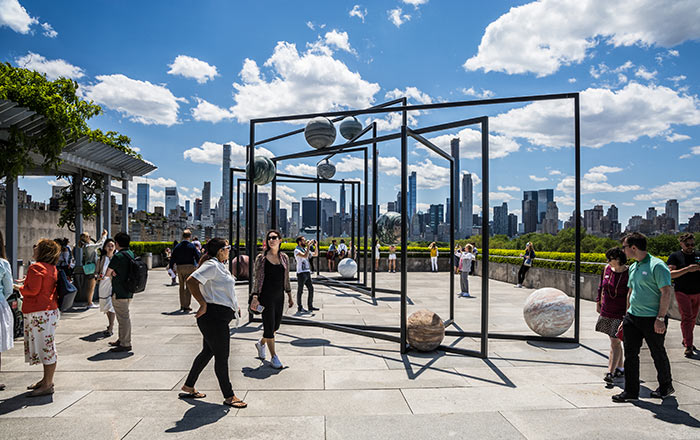French Horn. Unwound. Hanging
Claes Oldenburg American, born Sweden
Coosje van Bruggen American
Not on view
Claes Oldenburg redefined the idea of the monument through enormous reproductions of commercial and quotidian objects that are at once whimsical, irreverent, and absurd. He moved to New York after college in 1956 and quickly became a prominent figure in Happenings and performance art, but his plaster sculptures shown in 1961 at The Store, a display in his studio that parodied American consumerism, launched him to fame as a leading artist associated with the emergent Pop movement. Later that decade, Oldenburg embarked on a series of Proposed Colossal Monuments, renderings in pencil or watercolor that transformed a familiar site or geographic location through a startling sculptural intervention. By the 1970s, Oldenburg had turned to actual monumental outdoor sculptures as his primary output. Most of these are co-authored with Coosje van Bruggen, his longtime artistic collaborator and second wife.
Here, Oldenburg and van Bruggen render a life-size French horn as a "soft" instrument, its tightly coiled tubing loosened and unwound. While their realistic techniques might indicate an attempt at a faithful representation, their depiction of the horn’s pipes as sagging brass tubes render the instrument unplayable. This late, large-scale drawing indicates not only the artist’s sustained engagement with monumental forms but also his continued commitment to everyday objects as subjects suitable for representation.
This image cannot be enlarged, viewed at full screen, or downloaded.
This artwork is meant to be viewed from right to left. Scroll left to view more.

